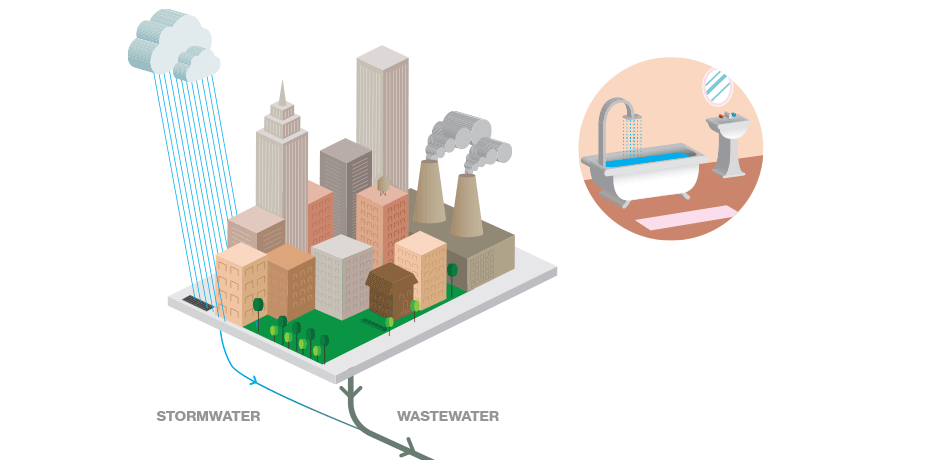Trick Obstacles in Urban Waste Water Treatment Methods
Trick Obstacles in Urban Waste Water Treatment Methods
Blog Article
Strategic Approaches to Improve Waste Water Therapy Efficiency and Lessen Ecological Impact
In the world of waste water therapy, the pursuit for improved performance and decreased ecological effect is a continuous difficulty that demands tactical services. As culture faces the imperative to handle water resources sustainably, a nuanced strategy becomes essential. The integration of sophisticated therapy technologies, energy-efficient procedures, resource recuperation strategies, improved nutrient removal techniques, and smart monitoring and control systems stands for a multifaceted structure for addressing these pushing problems. Nonetheless, what lies at the core of this complicated web of methods is the possible to reinvent the means we approach drainage treatment, not equally as a procedure of disposal, yet as a useful chance for advancement and environmental stewardship.
Advanced Treatment Technologies
Sophisticated membrane layer purification systems have actually transformed innovative wastewater treatment processes, dramatically boosting the removal of impurities. These innovative systems function by compeling water through a semi-permeable membrane layer, properly separating contaminations from the water stream. The membrane layer's microscopic pores catch toxins such as bacteria, viruses, and suspended solids, allowing just cleansed water to pass through. This technology has verified to be very efficient in removing a wide variety of contaminants, including drugs, hefty steels, and natural substances, which are frequently challenging to get rid of with typical therapy approaches.
Additionally, membrane purification systems supply various advantages over standard treatment methods. In addition, these systems are extremely flexible and can be easily incorporated right into existing treatment plants or utilized as standalone systems for decentralized applications.
Energy-Efficient Procedures
The combination of energy-efficient processes in wastewater therapy systems is essential for maximizing resource utilization and reducing functional prices. One key method to improving power performance in wastewater therapy is the utilization of advanced aeration systems, such as fine bubble diffusers or surface aerators, which can enhance oxygen transfer effectiveness and minimize power usage.
Moreover, maximizing procedure control and automation via the usage of advanced sensors and checking systems can boost total power effectiveness by changing operations in real-time based on actual demand and problems. Implementing power audits and frequently keeping an eye on energy performance indicators are essential practices to recognize locations for enhancement and track energy-saving efforts efficiently. In general, the adoption of energy-efficient procedures in wastewater therapy not just benefits the environment but also adds to long-lasting expense savings and functional sustainability.
Source Healing Methods
With a focus on optimizing source use and sustainability in wastewater treatment systems, the implementation of source healing techniques emerges as a crucial facet in boosting operational performance. Source healing techniques in wastewater treatment entail the identification and extraction of beneficial sources from the waste stream, consequently turning what was as soon as taken into consideration waste into an important asset. By carrying out resource recuperation techniques such as nutrient removal and healing, energy generation from organic matter, and the manufacturing of recyclable water, wastewater therapy plants can reduce ecological effect while optimizing efficiency.

Boosted Nutrient Removal Techniques
Applying innovative nutrient removal techniques is important for maximizing the performance of wastewater treatment systems. Enhanced nutrient elimination plays a critical function in reducing the ecological effect of see page treated effluent released into water bodies. Among the crucial methods made use of for improved nutrient removal is the procedure of biological nutrient elimination (BNR), why not look here which involves the elimination of nitrogen and phosphorus with organic processes. This can be attained with the use of specialized microbes that can convert nitrogen substances into inert nitrogen gas via denitrification, and build up phosphorus within their cells via a process called boosted biological phosphorus elimination (EBPR)

In addition to BNR, progressed treatment methods such as membrane layer bioreactors (MBRs) and created wetlands can likewise be used to enhance nutrient removal performance. MBRs utilize membranes to attain top quality effluent requirements by properly removing nutrients and suspended solids. Created marshes resemble natural wetland procedures to get rid of nutrients via plant uptake, microbial task, and sedimentation. By integrating these innovative nutrient elimination methods into wastewater pop over to this site therapy municipalities, industries and systems can effectively lower nutrient contamination and secure the environment.
Smart Monitoring and Control Equipment
Using advanced technology, the integration of clever tracking and control systems revolutionizes the functional efficiency of wastewater therapy facilities. These systems incorporate innovative sensors and data analytics to continually keep track of key criteria such as pH levels, turbidity, liquified oxygen, and flow prices in real-time. By gathering and analyzing this information, operators can obtain useful insights right into the efficiency of the treatment procedures, allowing positive adjustments to maximize therapy effectiveness.
Smart monitoring and control systems also sustain remote surveillance abilities, permitting operators to gain access to real-time data and control functions from off-site areas. This remote ease of access boosts operational versatility and responsiveness, making it possible for swift treatments in instance of system malfunctions or changes in influent top quality. The predictive maintenance abilities of these systems aid protect against equipment failures and lessen downtime, inevitably boosting the overall reliability of wastewater treatment operations.
Final Thought
In verdict, strategic approaches such as advanced treatment innovations, energy-efficient procedures, resource recovery strategies, enhanced nutrient removal techniques, and smart monitoring and control systems play a crucial role in enhancing wastewater treatment efficiency and minimizing environmental influence. By applying these strategies, wastewater therapy plants can boost their total efficiency, lower power usage, recoup beneficial sources, and make certain conformity with environmental guidelines. These techniques are necessary for effective and sustainable wastewater management practices.

In final thought, strategic methods such as innovative treatment innovations, energy-efficient procedures, source healing methods, boosted nutrient removal methods, and clever monitoring and control systems play a crucial role in improving wastewater treatment effectiveness and lessening ecological impact.
Report this page